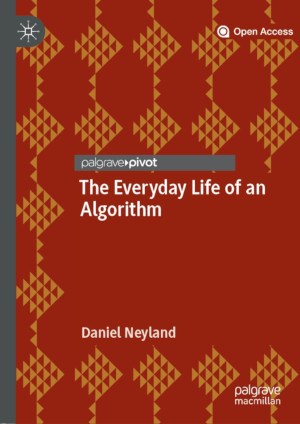Communicating Science
A Global Perspective
by Toss Gascoigne, Bernard Schiele, Joan Leach, Michelle Riedlinger, Bruce V. Lewenstein, Luisa Massarani, Peter Broks
DescriptionTable of ContentsDetailsHashtagsReport an issue
This collection charts the emergence of modern science communication across the world. This is the first volume to map investment around the globe in science centres, university courses and research, publications and conferences as well as tell the national stories of science communication.
How did it all begin? How has development varied from one country to another? What motivated governments, institutions and people to see science communication as an answer to questions of the social place of science?
Communicating Science describes the pathways followed by 39 different countries. All continents and many cultures are represented. For some countries, this is the first time that their science communication story has been told. 






Book Description
Modern science communication has emerged in the twentieth century as a field of study, a body of practice and a profession - and it is a practice with deep historical roots. We have seen the birth of interactive science centres, the first university actions in teaching and conducting research, and a sharp growth in employment of science communicators.This collection charts the emergence of modern science communication across the world. This is the first volume to map investment around the globe in science centres, university courses and research, publications and conferences as well as tell the national stories of science communication.
How did it all begin? How has development varied from one country to another? What motivated governments, institutions and people to see science communication as an answer to questions of the social place of science?
Communicating Science describes the pathways followed by 39 different countries. All continents and many cultures are represented. For some countries, this is the first time that their science communication story has been told.
This open book is licensed under a Creative Commons License (CC BY). You can download Communicating Science ebook for free in PDF format (22.9 MB).
Table of Contents
Chapter 1
Introduction: A global trend, an emerging field, a multiplicity of understandings: Science communication in 39 countries
Chapter 2
The Timelines: A broad‑brush analysis
Chapter 3
Africa: Health communication in selected African states from colonial times
Chapter 4
Aotearoa New Zealand: Participatory science and bicultural knowledge communication
Chapter 5
Argentina: Contexts, agents and practices in science communication
Chapter 6
Australia: The five stages of development of science communication
Chapter 7
Brazil: History, significant breakthroughs and present challenges in science communication
Chapter 8
Canada: One country, two cultures: Two routes to science communication
Chapter 9
China: Science popularisation on the road forever
Chapter 10
Colombia: Stories in the history of science communication
Chapter 11
Denmark, Norway and Sweden: Share, make useful and critically discuss: Science communication
Chapter 12
Estonia: Science communication in a post-Soviet country
Chapter 13
France: 'The Republic needs scholars!' A rapid history of making science public in 20th-century France
Chapter 14
Germany: Continuity and change marked by a turbulent history
Chapter 15
Ghana: When individuals refuse to let science communication die
Chapter 16
India: Tracing science communication in independent India
Chapter 17
Iran: From the ancient world of Elam to modern science communication
Chapter 18
Ireland: Science in a land of storytellers
Chapter 19
Israel: Developed Science, developing Science Communication
Chapter 20
Italy: The long and winding path of science communication
Chapter 21
Jamaica: Science communication in the land of wood and water
Chapter 22
Japan: Western science and Japanese culture
Chapter 23
Malaysia: Science communication in a pluralistic society
Chapter 24
Mexico: From simple and centralised to expansion, diversity and complexity
Chapter 25
The Netherlands: From the first science information officers to the Dutch Research Agenda
Chapter 26
Nigeria: Battling the odds: Science communication in an African state
Chapter 27
Pakistan: Changing landscape of science communication
Chapter 28
Philippines: From science then communication, to science communication
Chapter 29
Portugal: The late bloom of (modern) science communication
Chapter 30
Russia: Russian pendulum: From glorious science propaganda to modest public engagement initiatives
Chapter 31
Singapore: An evolving and increasingly complex relationship
Chapter 32
South Africa: Science communication throughout turbulent times
Chapter 33
South Korea: A different exemplar
Chapter 34
Spain: Evolution and professionalisation of science communication
Chapter 35
Taiwan: From nationalising science to democratising science
Chapter 36
Thailand: From temples and palaces to modern science communication
Chapter 37
Turkey: From the Ottoman Empire to the Republic
Chapter 38
Uganda: Cultural values and modern media as drivers of science communication
Chapter 39
United Kingdom: The developing relationship between science and society
Chapter 40
United States of America: Science communication in the USA: It's complicated
Book Details
Title
Communicating Science
Publisher
ANU Press
Published
2020
Pages
994
Edition
1
Language
English
ISBN13
9781760463656
ISBN10
1760463655
ISBN13 Digital
9781760463663
ISBN10 Digital
1760463663
PDF Size
22.9 MB
License

Related Books

How To Do Science has been written for students of the life sciences who are actively engaged in the scientific process. This guide introduces you to what it means to be a scientist. You will learn about the scientific method and how to carry out many tasks of a scientist, including: designing experiments, visualising data, accessing scientific lit...

In this edited open access book leading scholars from different disciplinary backgrounds wrestle with social science integration opportunities and challenges. This book explores the growing concern of how best to achieve effective integration of the social science disciplines as a means for furthering natural resource social science and environment...

This book examines the methodological complications of using complexity science concepts within the social science domain. The opening chapters take the reader on a tour through the development of simulation methodologies in the fields of artificial life and population biology, then demonstrates the growing popularity and relevance of these method...

Policy-making to address grand challenges faces greater complexity than any previous project of modernization. Future scenarios are haunted by uncertainty and there is real ambivalence as to the values that policy should strive for. In this situation decision-makers look to research and innovation to provide answers and solutions. But neither can t...

This book constitutes the refereed proceedings of the 31st International Symposium on Computer and Information Sciences, ISCIS 2016, held in Krakow, Poland, in October 2016.
The 29 revised full papers presented were carefully reviewed and selected from 65 submissions. The papers are organized in topical sections on smart algorithms; data classific...

This book begins with an algorithm - a set of IF...THEN rules used in the development of a new, ethical, video surveillance architecture for transport hubs. Readers are invited to follow the algorithm over three years, charting its everyday life. Questions of ethics, transparency, accountability and market value must be grasped by the algorithm in ...

